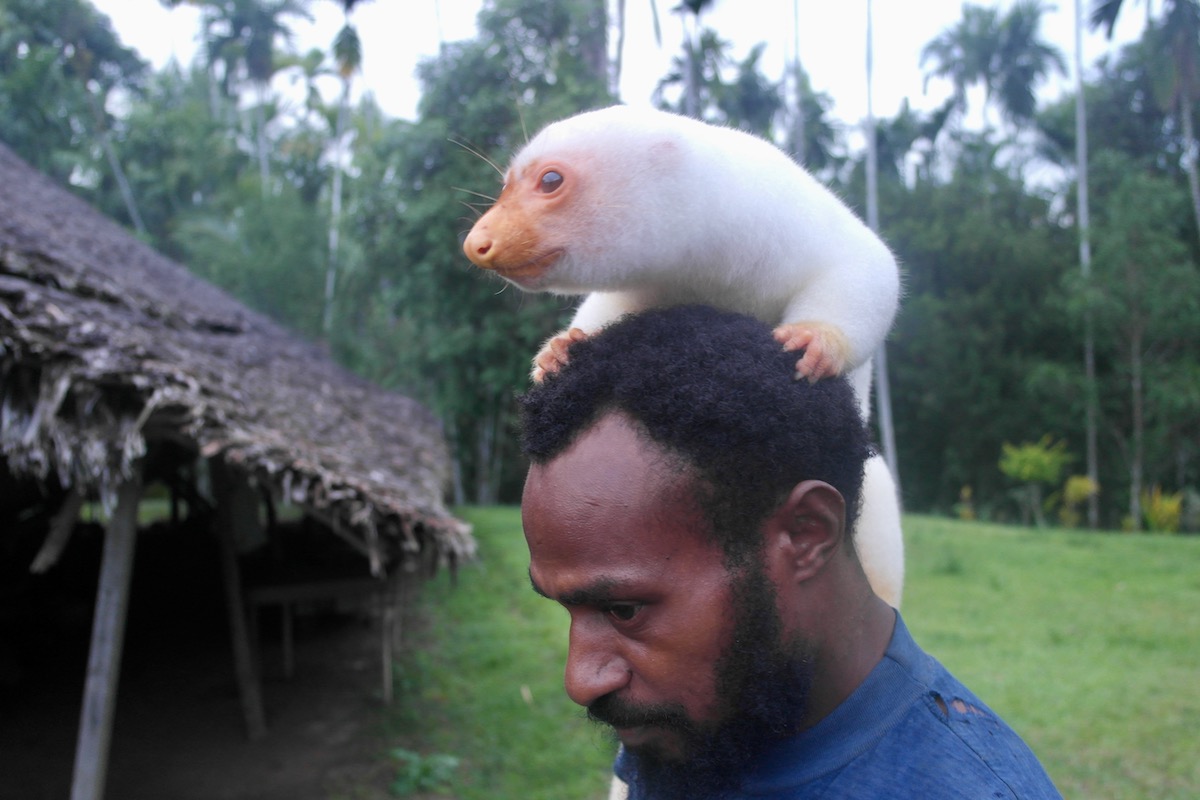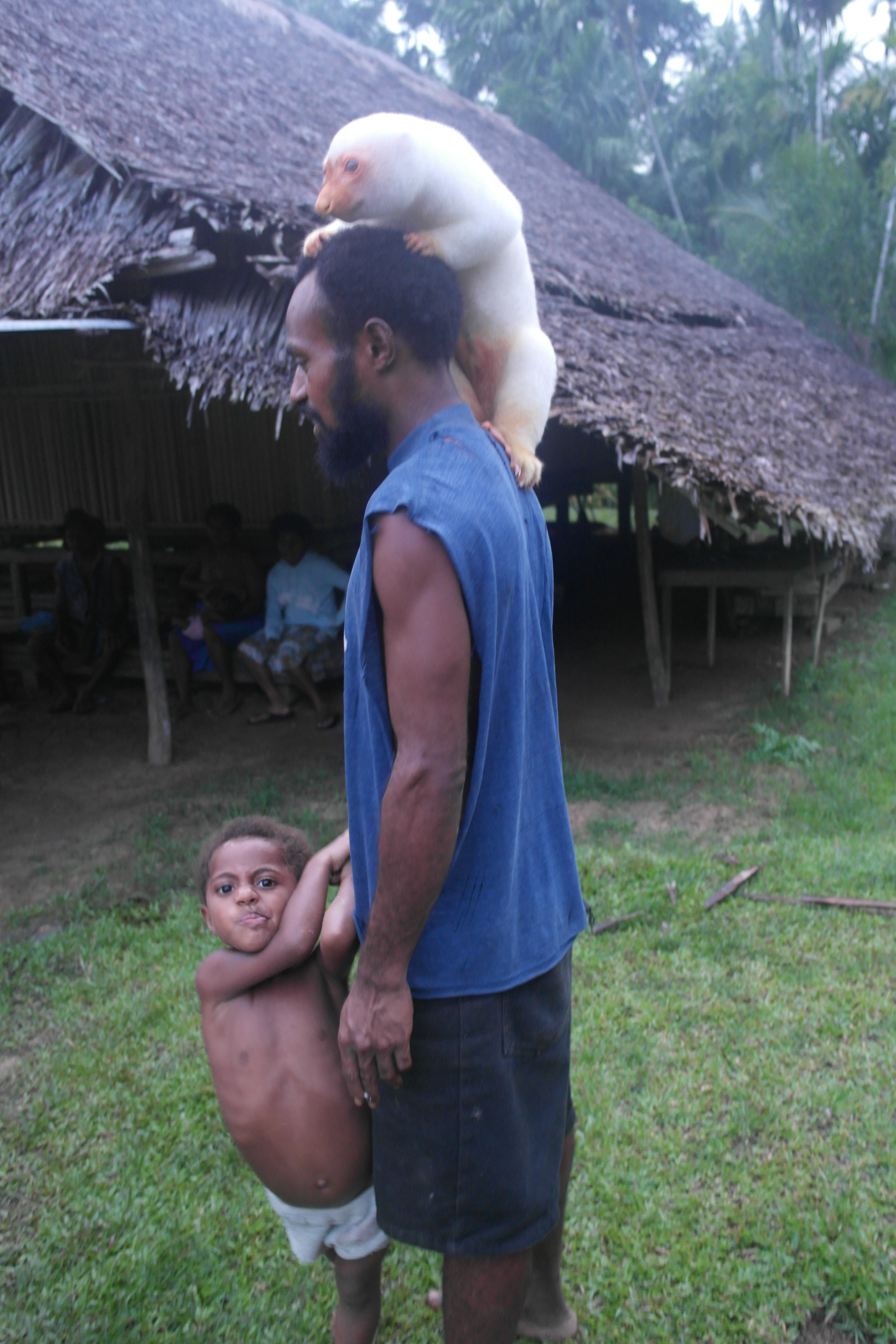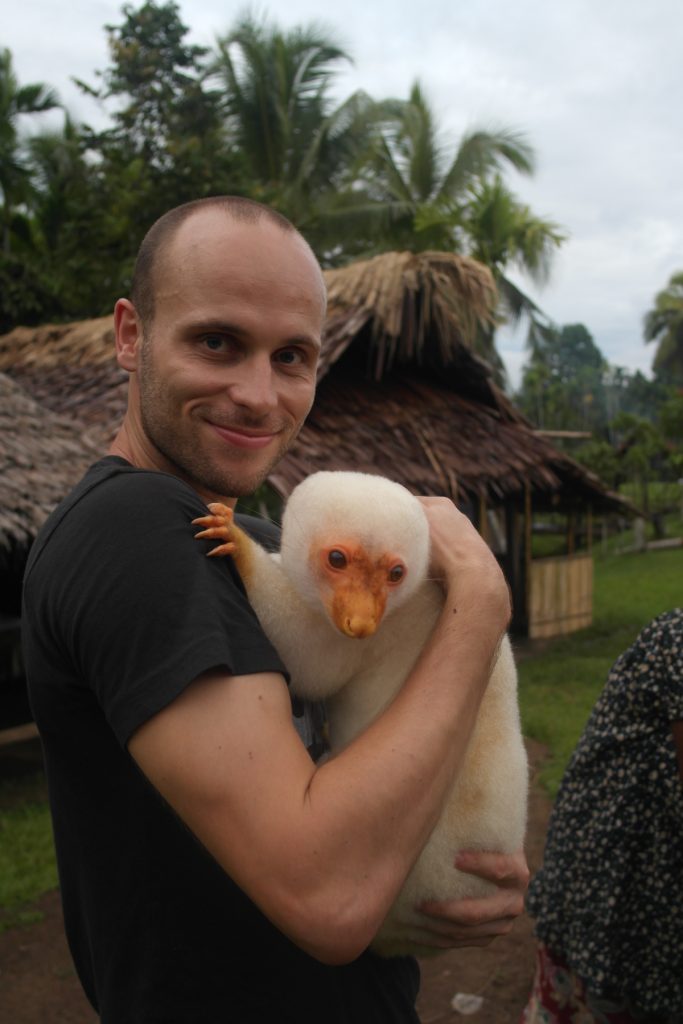The Cuscus animal was admittedly never on my wildlife bucket list, how could it be? I didn’t even know it existed!
Not so many moons ago I stayed with a tribe in Papua New Guinea in the jungle of Madang. The tribe kept quite possibly the oddest, most unique-looking animal that I have seen so far on my travels. it’s hard to explain, but luckily I took photos – the closest-looking thing to the cuscus animal (AKA ‘Common Spotted Cuscus) that I had personally witnessed was a sloth in Costa Rica, although they aren’t related.
I figured that the tribe were keeping it for meat, but it turned out to be their pet after a mixture of superstition and concerns over the emblematic animal’s welfare in the rainforest. When I got back to ‘the real world,’ I got the kettle on and read up on this cute, elusive creature.
Related Post: Backpacking Papua New Guinea: Is It Safe? (RAW Guide!)
12 Fantastic Facts About The Common Spotted Cuscus!

- The Cuscus is a large marsupial native only to the northern forest of the Cape York region of Australia, New Guinea and nearby smaller islands in the continent of Australia.
- The Cuscus animal can reach 14 to 26 inches in length and weigh anywhere between 3.3 and 13 pounds, about the size of a chubby house cat.
- It has a long tail around 13 to 24 inches, which it uses to wrap around tree branches to climb up high.
- Although it looks somewhat of a mix between a monkey and a sloth, the cuscus is actually a subspecies of the possum.
- The Cuscus is a primarily nocturnal animal, sleeping throughout the day and waking up at night in search of food throughout the trees, feasting on small birds, reptiles, leaves and fruit. Yeah, you thought this adorable little thing was herbivorous, didn’t you? Sorry to disappoint.
- Bigger birds do get revenge for their bird pals though, as the cuscus’ main predators are often larger birds of prey who attack and eat the baby cuscus.
- Humans are the biggest predator though, as deforestation, meat and lust for its thick, woolly fur are the catalysts for the death of most cuscus species.
- The cuscus is a pretty crappy predator in the grand scheme of things. It has an extremely low metabolism and body temperature, has a similar speed to a sloth and rarely catches other animals. Still, they survive, so kudos to them for the cards that they have been dealt.
- They are not yet on the official endangered species list as of yet – they are certified as ‘vulnerable’ by wildlife campaigners The Wildlife Conservation Society in Papua New Guinea doing all it can to preserve the future of cuscus.
“It’s a lovely animal with a chestnut-burgundy coat, yellow racing stripes on the back and it’s beautiful,”
“Because it’s beautiful the people who live in this region have been using it for a ceremonial dress for thousands of years.” – (WCS biologist, Nathan Whitmore)
10. If human interaction and terrifying Pacific jungle birds don’t kill them, cuscus lives from 8 to 12 years.
11. Although they are generally shy creatures, the male cuscus can become extremely aggressive with another male cuscus. They spit on branches and twigs of trees to inform others of their territory and mediate social interactions. If they encounter another male in their area, they make barking, snarling, and hissing noises and stand upright to defend their territories.
12. Cuscuses are sexually prolific all year round with multiple partners. The gestation period for a pregnant female is around 13 days, with a pouch period of 6–7 months. When the babies (usually 2-3 per time) are born, they only weigh around a gram and live in the pouches of their mother, much like in the kangaroo world until they reach maturity. Only one in three tend to survive the full 6-7 months though.
I hope you enjoyed these facts about the elusive Cuscus animal, aka the common spotted cuscus!








